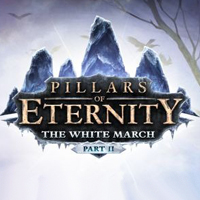Pillars of Eternity: The White March Part II review – The final chapter of the classic RPG adventure
The time has come for the second - and final - expansion for Pillars of Eternity. Once again we visit the White March, and we get to pick up some plotlines that we already know from the first part.
The review is based on the PC version.
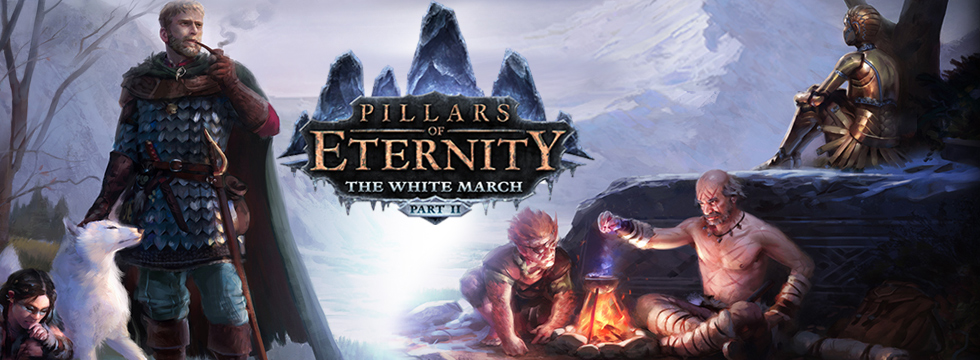
- the story is still top-notch;
- mechanics further developed thanks to the patch 3.0;
- new level cap, new items, new enemies.
- bigger battles means bigger chaos;
- recycled locations known from The White March Part 1;
- disrupted balance of the original game once you finish the expansion.
Pillars of Eternity establishes an obvious bond to the classic RPGs of the turn of the centuries: the isometric point of view, commanding a party, huge dialogue windows, and active-pause-based combat system. Justice has also been done to the mandatory expansion, although Obsidian – unlike in case of Baldur’s Gate – decided to release it in two parts. After playing through both of them, I begin to doubt that this was a good idea.
The second part of the journey to the White March picks up some plotlines of the previous episode: opening the ancient dwarven stronghold has allowed Stalwart to get back on its feet. But such a massive influx of income and prestige couldn’t have escaped the attention of the aggressive northern neighbor – Raedceras. Stalwart doesn’t really have a chance to take advantage of the unexpected economic boom – gold-thirsty mercenaries begin to trouble the region, and nightmares of an even greater danger haunt the main character: after all, somebody has killed off the dwarven masters of the Durgan’s Battery centuries ago. Who will stand beside Stalwart? Can the antagonistic factions unite, in face of the mysterious army? The party will thus reap the consequences of the decisions sowed in the White March Part I.
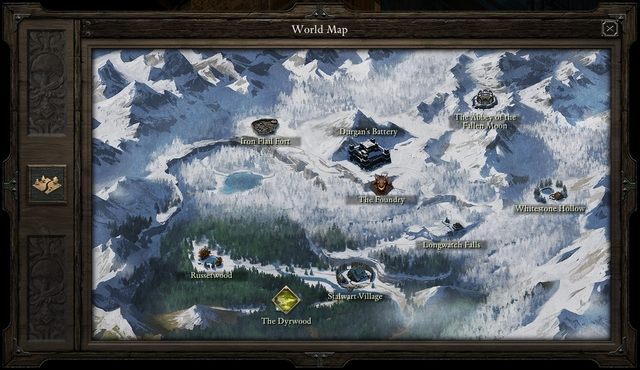
The return to the snow-covered March, and the evaluation of the changes it had undergone are the main threads of the second part of the expansion. There are some up- and downsides to this: it’s nice to see the fragments of the stronghold renewed, but the recycling of the old locations is visible, especially because no changes have been done to Stalwart – our main settlement. The developers tried to make up for this with expanding the White March itself – we will venture into the mines stretching underneath the village, visit the previously unexplored wing of the Durgan’s Battery, as well as a couple of new dungeons, and then some locations on the surface. A handful of sidequests will once again take us to Dyrwood, where we’ll have to ascertain our rights to the Caed Nua stronghold, claimed by the inheritors of the ancient lineage. In spite of those little detours, the bulk of the story takes us back into the snowy, icebound, desolate realms of the White March. Personally, I think the graphics could use a little more variety; the mountainous landscape isn’t just just ice and snow, as Skyrim has once proved.
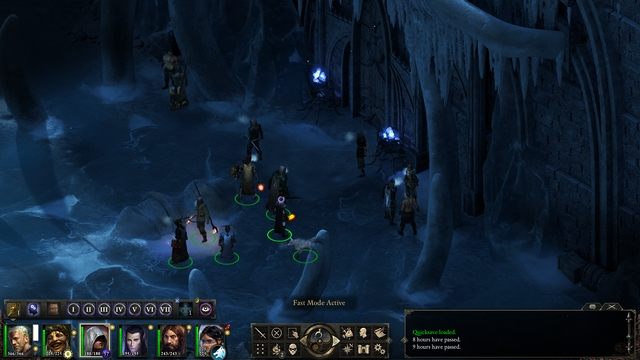
How many people played White Match Part I?
Probably not many… the statistics on Steam leave no doubt: 8% of people who own Pillars of Eternity have actually completed the original title, and only 1.5% have opened the gates of the Durgan’s Battery. Maybe the fans are waiting for the whole expansion to come out, before they give it a try?
The new locations are a job well done – these are among the biggest regions in the Pillars: full of secrets, treasures, and previously unknown monsters - there can be a lot of them on higher difficulty levels. The expansion raises the bar, since the level cap is now at 16 – this means bigger groups of enemies, with wizards, priests, and monsters with unusual skills. A typical fight can involve even 10 or 12 enemies – the thing is, this game barely manages to contain moments of such epicness. Conjuring allies, and casting spells or buffs, causes visible drops in framerate – the enemies don’t just stand there neither. The battles alone are pretty chaotic, and that dropping framerate makes it even more difficult to manage them. Controlling the combat in such circumstances is nearly impossible – on couple of occasions, I just decided to skip a fight altogether, hoping that a toss of dice would come out in my favor.
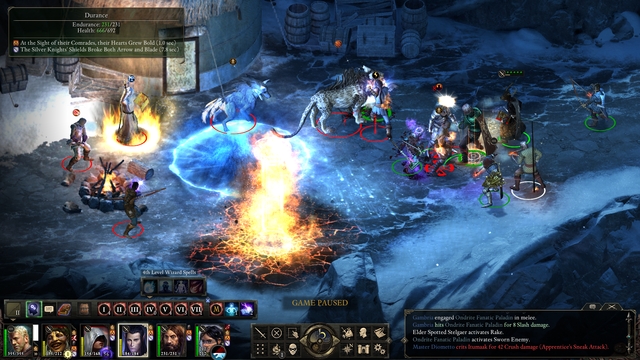
Therefore I venture to say that on the technical side, Pillars of Eternity has reached its limits. The fact that Obsidian introduces certain elements by means of new patches doesn’t seem to help a whole lot. The latest update, 3.0 – coming out together with the expansion – considerably changes the “survival” skill, allowing us to apply increasingly powerful bonuses to our statistics during the rest in the wilderness. The artefacts found in the White March are superior to those from the original game, and those of the characters that will complete the expansion, are going to come out a lot more powerful than the devs had initially assumed. The idea of splitting the White March into two parts has severely disrupted the balance of the entire Pillars of Eternity. The bottom line, in my opinion, is that a traditional, single expansion, would be a safer, and altogether a better solution.
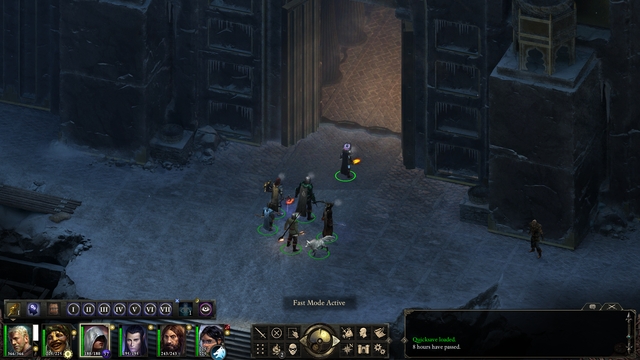
Thankfully, Obsidian managed to surprise us again in terms of the plot. After a somewhat mundane story of the first part, this one gets back to the high note of the original title. Once again, the gods will interfere with the affairs of the mortals, and the centuries-old quarrels of the pantheon might have an impact on the whole world. This time, the developers have focused on the theme of memory; is forgiveness the ultimate way to the new life? Is the concern for the better future enough of a reason to distort the history and alter the memories? The writers were able to grasp important dilemmas without the unnecessary pathos, thus adding even more depth to the game world. It’s enough to carefully read the dialogues, the history of the continent, or even the artifacts descriptions, to realize that Obsidian has build this world upon the foundation of pure gold.
Even among all these virtues, it’s hard not to sense a sort of fatigue here. The division of the White March turned out to be a mistake. However, the team did manage to sort the story out properly, and that couldn’t have been an easy task. Then there are issues with the environment – which still operates upon three principals: ice, snow, and rocks – and with the overall balance of Pillars of Eternity. Too powerful items tend to devoid the rest of the game of the pleasure of exploration in search of better equipment, or developing the characters. Furthermore, the technical shortcomings negatively impact the increasingly big battles – the new AI for the party, introduced in patch 2.0, helps only partially, and the growing chaos and declining clarity deter from applying more advanced tactics, because in the end it’s hard to even tell whether they were effective or not.
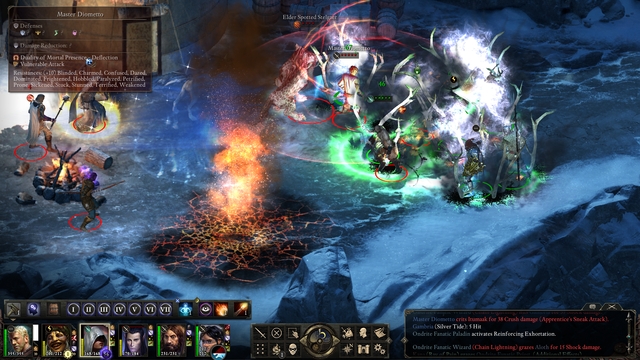
The expansion, despite its downsides, satisfied my lust for new adventures. However, as a fan of the series, I’d rather see the engine and combat mechanics being further developed instead of expanding the current icy setting. Simply put: I’d rather play Pillars of Eternity II.
Pillars of Eternity: The White March Part II
Pillars of Eternity: The White March Part II review – The final chapter of the classic RPG adventure
The time has come for the second - and final - expansion for Pillars of Eternity. Once again we visit the White March, and we get to pick up some plotlines that we already know from the first part.
